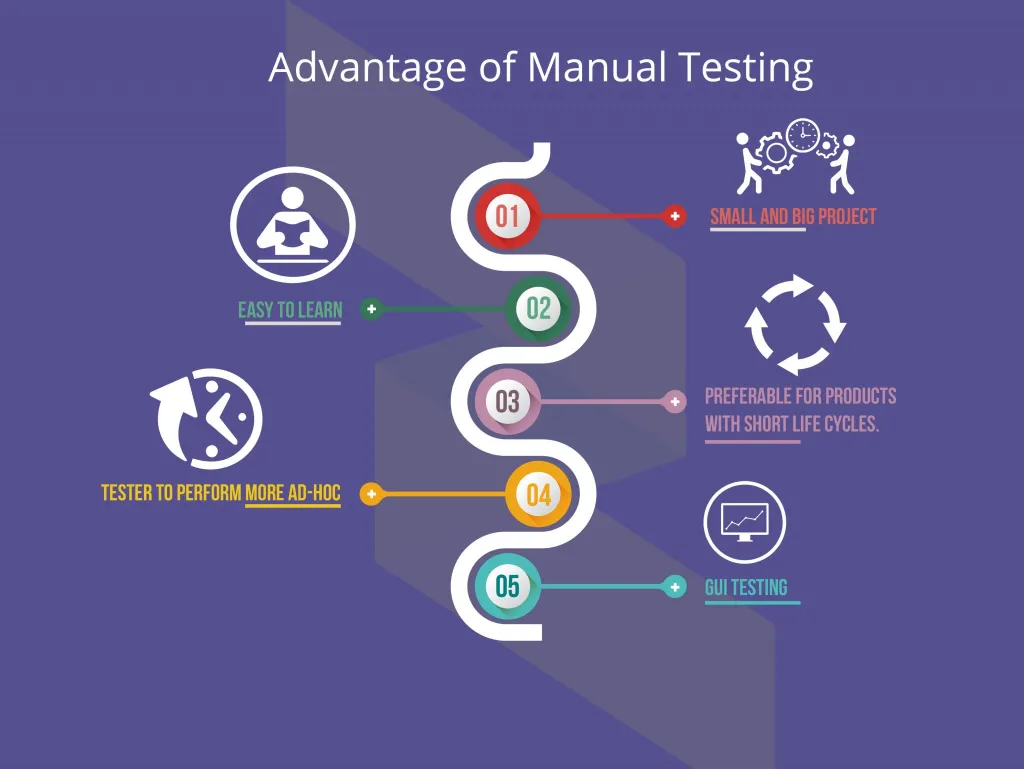manual testing Advantages: Manual Testing Training
Manual Testing Training offers several advantages that complement automated testing and contribute to the overall quality of software applications:
1. Exploratory Testing: Testers explore the software application freely, without predefined test scripts, to discover defects based on their intuition, experience, and creativity. This technique is effective for uncovering unexpected issues and evaluating the user experience.
2. Ad Hoc Testing: Testers perform testing without following any formal test plan or predefined test cases. They improvise and test the software based on their knowledge of the system, identifying defects and areas of concern as they encounter them.
3. Smoke Testing: Also known as build verification testing, smoke testing involves executing a set of basic tests on a new build or version of the software to ensure its stability and readiness for further testing. It focuses on critical functionalities to determine if the build is suitable for more extensive Manual Testing Training .
4. Sanity Testing: Similar to smoke testing, sanity testing aims to quickly evaluate whether specific areas or functionalities of the software are working correctly after a minor change or bug fix. It is less exhaustive than regression testing and helps ensure the stability of recent changes.
5. Usability Testing: Testers evaluate the software from the end user’s perspective, focusing on ease of use, intuitiveness, and user satisfaction. They assess factors such as navigation, layout, accessibility, and overall user experience to identify areas for improvement.
6. User Acceptance Testing (UAT): End users or stakeholders validate the software to ensure it meets their requirements and expectations. UAT involves real-world scenarios and typically occurs in a production-like environment to assess the software’s readiness for deployment.
7. Boundary Testing: Testers focus on boundary conditions of input parameters to identify defects related to boundary values, such as minimum and maximum limits. This technique helps ensure that the software behaves correctly at the edges of its input domains.
8. Error Guessing: Testers use their intuition, experience, and domain knowledge to predict potential error-prone areas and design test cases to uncover defects. This technique relies on the tester’s ability to think critically and anticipate where issues might arise.
9. Regression Testing: Testers verify that recent changes or bug fixes have not introduced new defects or caused unintended side effects in existing functionalities. While regression testing can be automated, manual regression testing is often performed when automation is not feasible or cost-effective.
10. Compatibility Testing: Testers assess the software’s compatibility with different operating systems, browsers, devices, and environments to ensure consistent behavior across diverse platforms and configurations.
These Manual Testing Training techniques complement automated testing and play a crucial role in ensuring the quality, reliability, and usability of software applications. Effective manual testing requires skilled testers with a keen eye for detail, critical thinking abilities, and a thorough understanding of the software under test.
